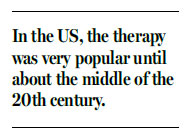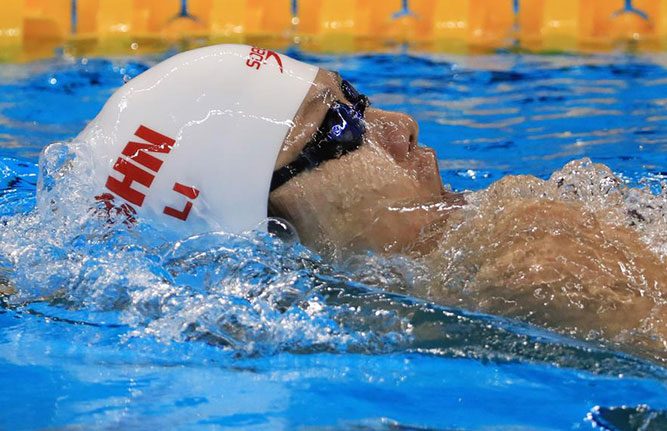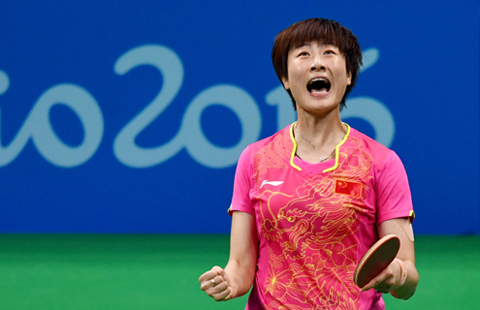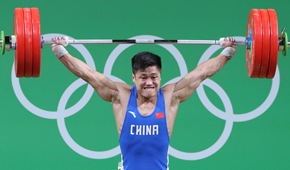Is cupping therapy effective? Read to know
By Cesar Chelala (China Daily) Updated: 2016-08-12 08:12
There was a gasp of surprise at the Rio Olympic Games when American swimmer Michael Phelps added one more gold to his already record tally of 18 - he has added two more since. But the surprise was not only for his remarkable achievement but also for some dark purple circles on his shoulders and back. They were signs of "cupping" that he had undergone before the race.
Cupping is a form of therapy widely used in traditional Chinese medicine, or TCM. It consists of creating a local suction on the skin using either heat (fire) or mechanical devices (hand or electrical pumps). This method is believed to draw out toxins, facilitate blood flow, soothe muscle pain and, in some cases, help cure insomnia.
Cupping has a long history. The Ebers Papyrus, written circa 1550 BC, considered one of the oldest medical textbooks in the Western world, describes how the Egyptians used cupping to help cure some frequent medical conditions and how it was also used by Saharan peoples. Hippocrates, a Greek physician who many believe laid the foundation of scientific medicine, also used this technique circa 400 BC to treat some internal diseases and structural problems.
Ge Hong (AD 284-364), a minor southern official during the Eastern Jin Dynasty (AD 317-420), was the first to use cupping in China. Ge was interested in alchemy, herbalism and techniques of longevity, and popularized the saying: "Acupuncture and cupping, more than half of the ills cured." Later, this method came to be used across Asia and Europe.
In the dry cupping procedure, practitioners place specially made cups on the skin. They then use either heat or an air pump to create suction between the cup and the skin. This creates a vacuum on the patient's skin to dispel stagnant blood and lymph, thereby improving the flow of qi. It is used on the back, shoulders and other muscles such as those on the back of the neck.
Athletes who use this therapy claim that it is highly effective. Among those who use this method are US gymnast Alex Naddour and Belarusian swimmer Pavel Sankovich, who reportedly said cupping is a great recovery tool. Hollywood stars Gwyneth Paltrow and Jennifer Aniston and Canadian pop star Justin Bieber, too, use it. In the United States, the therapy was very popular until about the middle of the 20th century; now people use it only occasionally.
But the purple patches on Phelps's shoulders have significantly driven up sales of cupping equipment, said Jessica MacLean, acting director of the International Cupping Therapy Association. Phelps has even featured in a recent promotional video on cupping treatment for a sponsor.
Cupping has been used to treat a wide variety of medical conditions, including blood disorders, rheumatic diseases, gynecological problems, and skin disorders such as eczema and acne. Those who receive the treatment also claim improvement in their physical and psychological well-being.
Some practitioners have also used cupping as an alternative treatment for cancer. Despite the practitioners' claim for effectiveness, however, the American Cancer Society recently said: "There is no scientific rationale for expecting any health benefit from cupping." And it warned that the treatment carried a small risk of burns.
It is very difficult to carry out controlled experiments to test the efficacy of cupping. But 40 people suffering from arthritis (of the knee) who took part in an experiment reported less pain after four months of treatment compared with those who hadn't received the cupping treatment.
The obvious question is: How effective is this treatment? One cannot deny there could be a placebo effect. This is a beneficial effect, produced by a placebo drug or treatment that cannot be attributed to their properties, and must therefore be due to the patient's belief in that treatment. Perhaps, as with other alternative treatments, cupping is as good as it makes you feel.
The author is an international public health consultant.

(China Daily 08/12/2016 page11)









